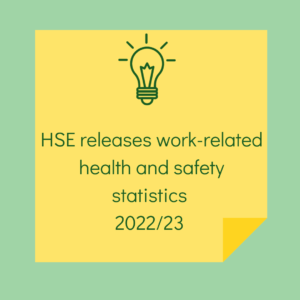 Great Britain, November 23, 2023 – The Health and Safety Executive (HSE) has unveiled its annual statistics report, providing a fresh perspective on health and safety in the workplace and outlining key concerns for employers.
Great Britain, November 23, 2023 – The Health and Safety Executive (HSE) has unveiled its annual statistics report, providing a fresh perspective on health and safety in the workplace and outlining key concerns for employers.
Work-Related Ill Health
In the 2022/23 period, a staggering 1.8 million workers experienced work-related ill health, encompassing both new and longstanding issues. Stress, depression, or anxiety took the lead, affecting 49% (875,000) of the cases, followed by musculoskeletal disorders at 27% (473,000). The impact of these health issues was profound, with stress, depression and anxiety and musculoskeletal disorders contributing to the loss of 17.1 million and 6.6 million working days, respectively.
Workplace Injuries and Fatalities
The report indicated a decrease in non-fatal workplace injuries, with 561,000 workers affected in 2022/23, down from 565,000 in the previous year. Slips, trips, or falls (32%), handling, lifting, or carrying (17%), being struck by a moving object (11%), acts of violence (8%), and falls from height (8%) were identified as the most common causes of non-fatal injuries. Unfortunately, the number of work-related fatalities rose to 135, emphasising the persistent need for robust safety measures. Falls from height (40), being struck by a moving object (29), and being struck by a moving vehicle (20) were cited as the top three causes of fatal incidents.
Economic Impact
The economic ramifications of work-related issues were substantial, with 35.2 million working days lost in 2022/23 due to ill health and non-fatal injuries. Moreover, the total annual cost of work-related injuries and new cases of ill health amounted to £20.7 billion in 2020/21. This financial burden was distributed among employers (£3.9 billion), the Government (£4.6 billion), and individuals (£12.2 billion).
Conclusion
In conclusion, the HSE’s latest annual report paints a comprehensive picture of the state of health and safety in Great Britain’s workplaces. The alarming statistics regarding work-related ill health, injuries, and fatalities underscore the urgent need for prioritising workplace safety and mental health. The economic burden further emphasises the importance of proactive measures to mitigate both human and financial costs. Employers, government bodies, and individuals must collaborate to create safer and healthier work environments for the wellbeing of the workforce and the economy.







